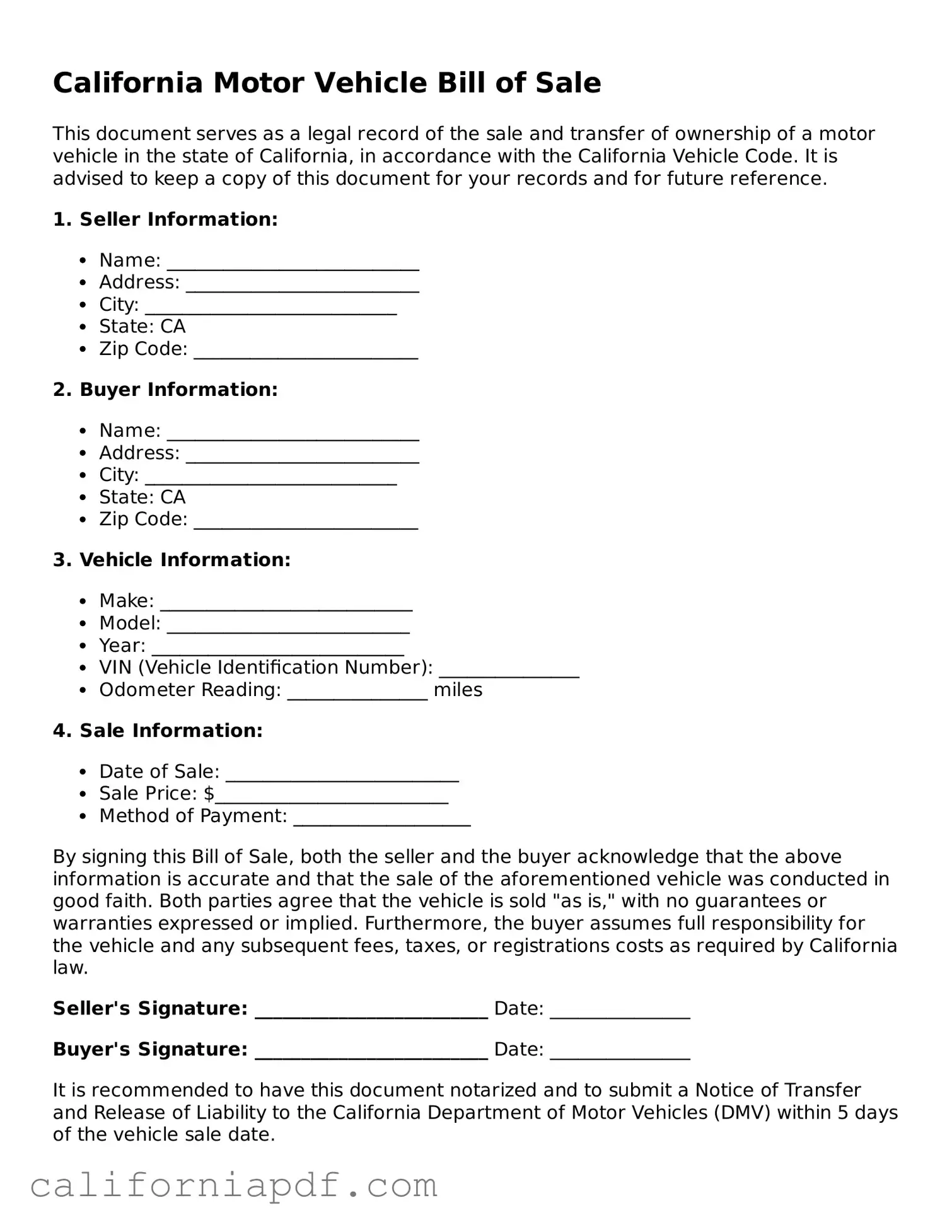California Motor Vehicle Bill of Sale
This document serves as a legal record of the sale and transfer of ownership of a motor vehicle in the state of California, in accordance with the California Vehicle Code. It is advised to keep a copy of this document for your records and for future reference.
1. Seller Information:
- Name: ___________________________
- Address: _________________________
- City: ___________________________
- State: CA
- Zip Code: ________________________
2. Buyer Information:
- Name: ___________________________
- Address: _________________________
- City: ___________________________
- State: CA
- Zip Code: ________________________
3. Vehicle Information:
- Make: ___________________________
- Model: __________________________
- Year: ___________________________
- VIN (Vehicle Identification Number): _______________
- Odometer Reading: _______________ miles
4. Sale Information:
- Date of Sale: _________________________
- Sale Price: $_________________________
- Method of Payment: ___________________
By signing this Bill of Sale, both the seller and the buyer acknowledge that the above information is accurate and that the sale of the aforementioned vehicle was conducted in good faith. Both parties agree that the vehicle is sold "as is," with no guarantees or warranties expressed or implied. Furthermore, the buyer assumes full responsibility for the vehicle and any subsequent fees, taxes, or registrations costs as required by California law.
Seller's Signature: _________________________ Date: _______________
Buyer's Signature: _________________________ Date: _______________
It is recommended to have this document notarized and to submit a Notice of Transfer and Release of Liability to the California Department of Motor Vehicles (DMV) within 5 days of the vehicle sale date.
